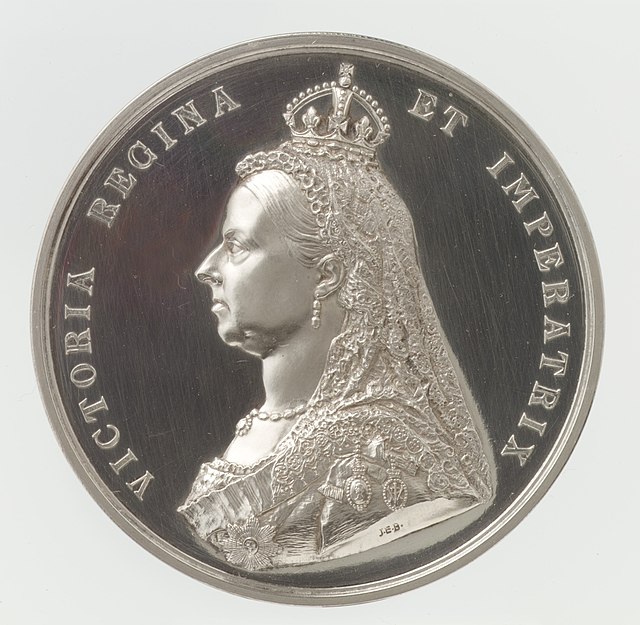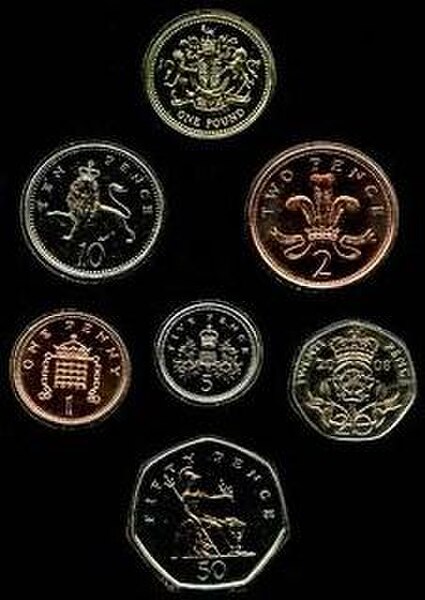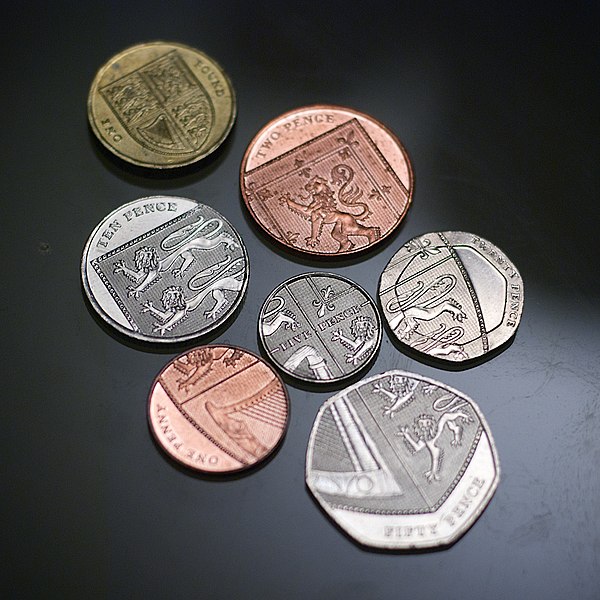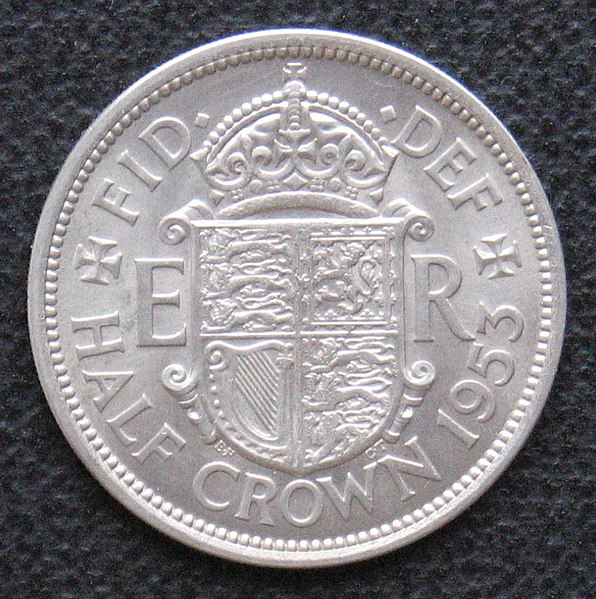The double florin, or four-shilling piece, was a British coin produced by the Royal Mint between 1887 and 1890. One of the shortest-lived of all British coin denominations, it was struck in only four years. Its obverse, designed by Joseph Boehm and engraved by Leonard Charles Wyon, depicts Queen Victoria, whilst the reverse, featuring national symbols of the United Kingdom, was designed by Wyon based on the coinage of Charles II.
Boehm's medal for Victoria's Golden Jubilee in 1887
Official portrait of Queen Victoria. 1882
The double florin was often confused with the crown, which carried a near-identical obverse and was similar in size; neither carried a statement of its value.
Punch magazine satirises the Jubilee coin issue, 9 July 1887. Punch is disappointed at the ugliness of the offspring of "Gauche-hen" (Goschen).
Coins of the pound sterling
The standard circulating coinage of the United Kingdom, British Crown Dependencies and British Overseas Territories is denominated in pennies and pounds sterling, and ranges in value from one penny sterling to two pounds. Since decimalisation, on 15 February 1971, the pound has been divided into 100 (new) pence. Before decimalisation, twelve pence made a shilling, and twenty shillings made a pound.
Examples of the standard reverse designs minted until 2008. Designed by Christopher Ironside (£2 coin is not shown).
The Royal Shield formed by six UK coins, with the £1 coin depicting the whole of the shield.
1981 commemorative twenty-five pence coin, celebrating the marriage of Prince Charles and Lady Diana Spencer.
Half crown, 1953








